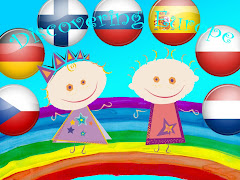German Petersburg.
In 18 century the residents of the new city on the Neva River called all foreign people the Germans because their presence was very noticeable in the Northern capital. The first people, who came from Germany, appeared on the banks of the Neva at the same time with the foundation of the city. Peter I invited experts from Western Europe to Russia, making enjoyable conditions for them. From the foundation of St. Petersburg till the revolution in 1917, the German colony had a great role in the life of the city.The German «outskirt» was located near the Winter Palace in the region of modern Millionnaya Street which was called the Great German at that time.
The influence of German Nobility in St. Petersburg increased during the reign of Anna Ioannovna. E. Byron, and General-Field Marshal von B. Minih, a native of Oldenburg were famous Germans of that time. Minih was invited to be an engineer: for more than ten years he has been leading the restructuring of the Peter and Paul Fortress, and also developed a project to protect the city from floods.
The Germans in the new Russian capital were in all classes of society - from members of the Imperial family to pharmacists and bakers. For example, a German princess Sophia Augusta Frederica Tserbstskaya-Anhalt became the Russian empress Catherine II, whose reign was a great era in the life of Russia.
People of Germany had a significant role in the foundation of the Academy of Sciences and the Military Medical Academy.
The Baron von Stiglitz was a «Petersburg German» - he was the court banker, first Governor of the State Bank and the founder of the famous art school, which has his name now.
For about twenty years a German businessman Heinrich Schliemann, who discovered the legendary Troy, had lived in the Northern capital.
There were about 300 architects of German origin during two centuries in St.Petersburg.
It is impossible to imagine the city center without the magnificent buildings of famous architect Andrey Shtakenshneyder. In 1833 he was appointed to be a court architect, and Nicholas I commissioned him to build palaces in court. Shtakenshneyder built palaces of Grand Duke Michael, Grand Duke Nicholas, the princes Beloselsky-Belozersky and a lot of luxurious private homes.
In the capital there were many German-Russian enterprises. In 1841 year the factory of musical instruments "J.Becker" was founded. In the beginning of last century about 250 factories with 30 thousand workers belonged to Germans. The biggest manufacture has been concentrated in the hands of brothers Siemens - they owned factories of manufacturing of cables, electric motors and other.
For a long time in St.Petersburg words "German" and "doctor" were almost synonyms. The most famous of them were: the best known pediatrist, the founder of the All-Russia guardianship on protection of motherhood and infancy Charles Rauhfus and the director Imperial institute Dmitry Ott.
The first state pharmacy (or the Pharmaceutical order) in the beginning of 1720 has moved to the German suburb. However a well-known pharmacy Vasily Pelj’s on Vasilevsky island became a symbol of a German pharmacy for Petersburgers. This pharmacy works today, storing the collection of subjects of pharmaceutical life of XVII–XX centuries, but glass spheres with a blue liquid and a stuffed animal of the dried up crocodile under a ceiling have been lost.
Since the foundation of St.-Petersburg, before revolution of 1917, the German colony played an important role in a city life.
The revival of the German community started in the early 1990's.




















